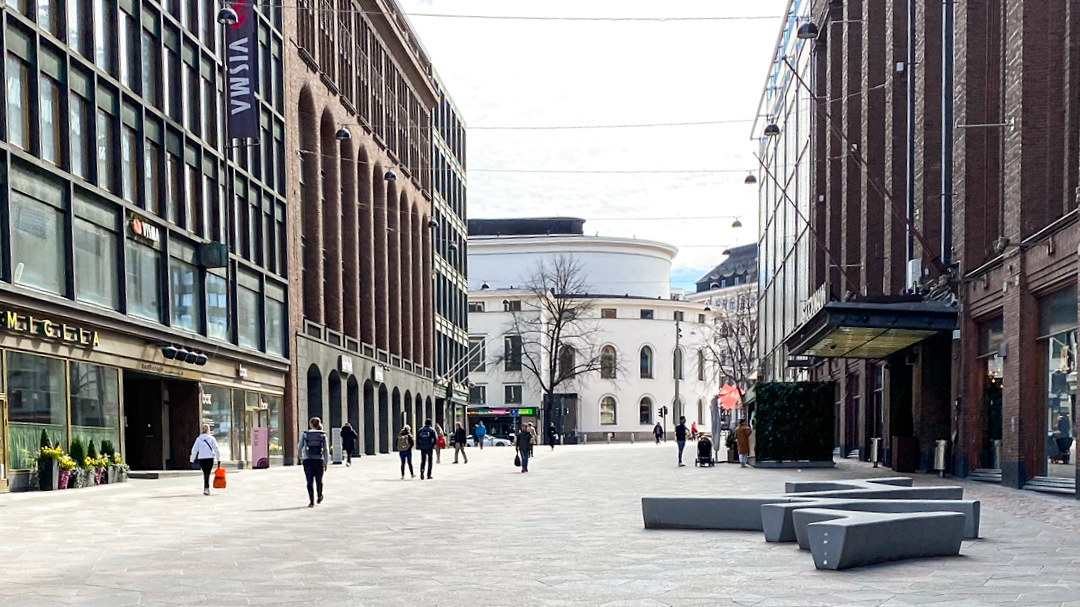Coronavirus infections still at an alarming level across the country

The number of new coronavirus infections is still at a high level and a number of regions are in the community transmission phase. It is possible that the epidemic will take a sudden turn for the worse across the country. However, there are indications that the sharp increase in new cases we saw in mid-November seems to have levelled off. We will have to wait a few weeks more before we can see the effects of the regional restrictions and recommendations.
Between 30 November and 6 December, a total of 3002 new cases were reported to the communicable diseases register, representing an increase of 132 from the previous week. The incidence of new cases was 54 per 100,000 inhabitants, while in the previous week it was 57.
The total number of new cases in the last two-week period (23 November–6 December) was 6136, which was 1895 cases more than in the preceding two-week period. The incidence of new cases was 111 per 100,000 inhabitants, while in the preceding two-week period it was 77.
Currently, the estimated basic reproduction number is 1.05–1.25, with a 90 per cent probability.
One in five new cases were reported among people already in quarantine.
During the period of 30 November–6 December, around 13,000–22,000 samples were analysed daily. The percentage of positive COVID-19 cases of all samples was about 2.3%.
Infections among older adults and need for hospital care on the rise
Younger age groups and working-age adults still account for the majority of new cases. During the period of 30 November–6 December, people under 50 years of age accounted for around 75 per cent of all cases and people under 30 years of age for nearly 40 per cent of the cases.
Around 15 per cent of all new cases were detected in people over 60 years of age. This is three percentage points higher than in the preceding week. The share of people over 70 years of age, whose age put them at high risk, exceeded eight per cent, which is about three percentage points up on the preceding week.
On 9 December 2020, a total of 233 patients were receiving hospital care due to the COVID-10 disease, and 27 of them were in intensive care. It is estimated that about 20,000 people, which is nearly 70 per cent of all confirmed cases, have recovered from the disease. The total number of confirmed cases in Finland now stands at 29,572. The number of deaths from COVID-19 has risen in recent weeks, reaching 433 deaths on 9 December.
Tracing of infections slightly more successful even in the Greater Helsinki area
In Finland as a whole, the source of infection was traced in about 60 per cent of all new cases during the period of 30 November–6 December The tracing of infections improved in the Hospital District of Helsinki and Uusimaa, and a source was identified in roughly half of all cases.
About half of all cases with a known source of infection were household transmissions. Occupational transmission accounted for about 15 per cent of all known sources of infection, while some two per cent of infections were traced back to food and beverage services and some three per cent to recreational activities.
About four per cent of the cases were traced back to educational institutions and about one per cent to early childhood education and care. The number of exposed students and staff in basic and upper secondary education reported by municipalities totalled 35,349 on 4 December. The number of confirmed infections was 446, accounting for 1.3 per cent of all school exposures. The National Institute for Health and Welfare (THL) has been collecting the data since the start of the autumn term.
Restrictions and recommendations cut back mass exposures
The number of mass exposures to COVID-19 remains high in Finland, and nearly all hospital districts reported at least one incident during the period of 30 November–6 December. One in three mass exposures were reported in the Hospital District of Helsinki and Uusimaa. It is important that people follow the regional restrictions and recommendations in place to avoid situations leading to mass exposure.
One in ten mass exposures were reported in healthcare and social welfare settings, one in five in recreational activities and one in three in educational institutions. Early childhood education and care accounted for some 16 per cent of all mass exposure reports. Mass exposures in daycare centres and schools have rarely led to further transmission. Private parties accounted for six per cent and food and beverage services for about three per cent of all reported mass exposures.
The monitoring report on the epidemic published today and the previous reports are available on the website of the Finnish Institute for Health and Welfare:
- Monitoring coronavirus (Finnish Institute for Health and Welfare), in Finnish
- COVID-19 epidemic: regional situations, recommendations and restrictions (Finnish Institute for Health and Welfare)
- Coronavirus in numbers (Hospital District of Helsinki and Uusimaa)
- Action plan for implementing recommendations and restrictive measures under the hybrid strategy following the first phase of the COVID-19 epidemic (Publications of the Ministry of Social Affairs and Health 2020:26), description sheet available in English.
Inquiries:
Taneli Puumalainen, Chief Physician, Finnish Institute for Health and Welfare, [email protected] (development of the epidemic)
Kari Auranen, Senior Researcher, Finnish Institute for Health and Welfare, [email protected] (projection models)
Liisa-Maria Voipio-Pulkki, Strategic Director, Ministry of Social Affairs and Health, [email protected] (situational picture and modelling group)